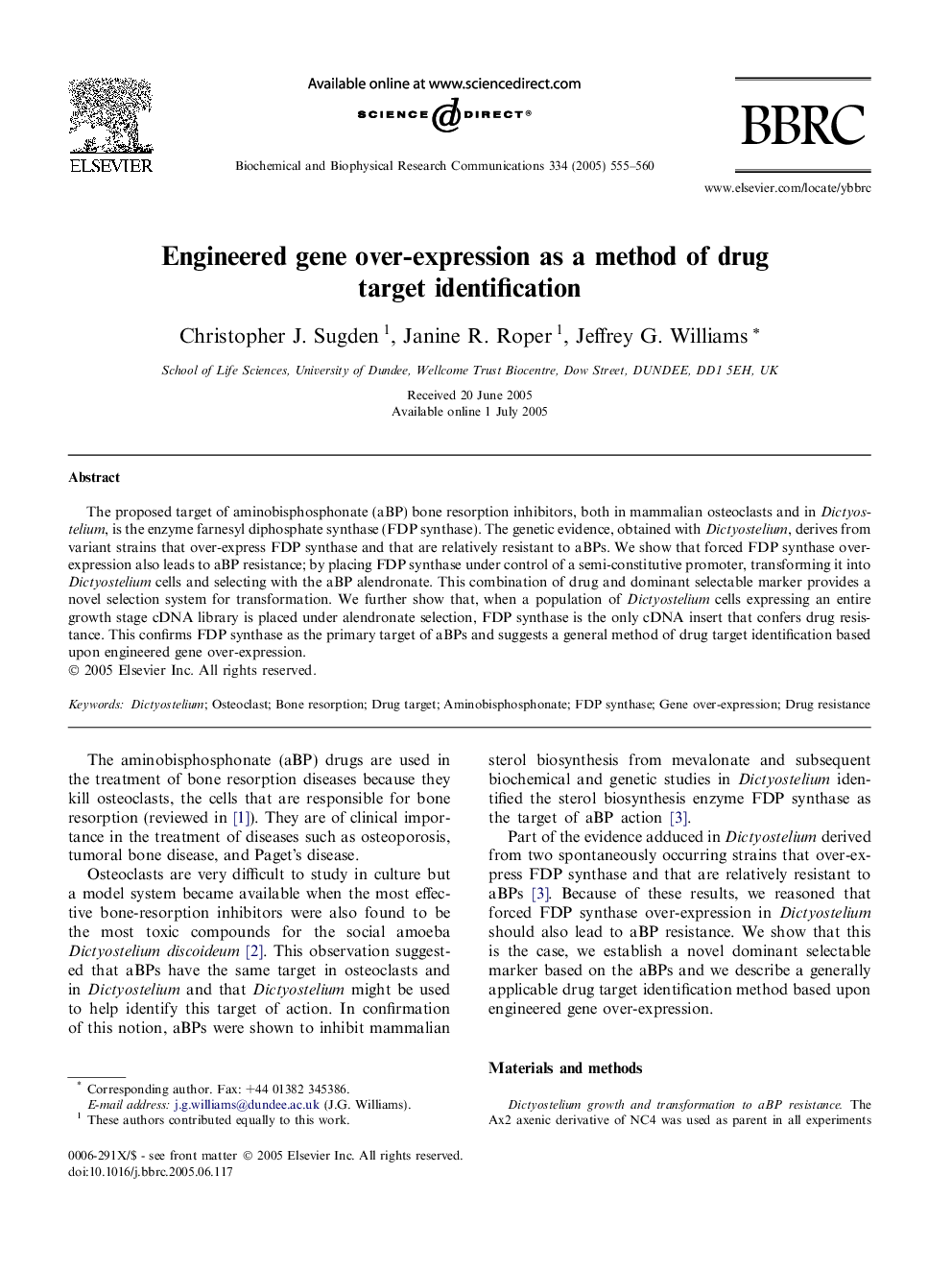| Article ID | Journal | Published Year | Pages | File Type |
|---|---|---|---|---|
| 10769226 | Biochemical and Biophysical Research Communications | 2005 | 6 Pages |
Abstract
The proposed target of aminobisphosphonate (aBP) bone resorption inhibitors, both in mammalian osteoclasts and in Dictyostelium, is the enzyme farnesyl diphosphate synthase (FDP synthase). The genetic evidence, obtained with Dictyostelium, derives from variant strains that over-express FDP synthase and that are relatively resistant to aBPs. We show that forced FDP synthase over-expression also leads to aBP resistance; by placing FDP synthase under control of a semi-constitutive promoter, transforming it into Dictyostelium cells and selecting with the aBP alendronate. This combination of drug and dominant selectable marker provides a novel selection system for transformation. We further show that, when a population of Dictyostelium cells expressing an entire growth stage cDNA library is placed under alendronate selection, FDP synthase is the only cDNA insert that confers drug resistance. This confirms FDP synthase as the primary target of aBPs and suggests a general method of drug target identification based upon engineered gene over-expression.
Related Topics
Life Sciences
Biochemistry, Genetics and Molecular Biology
Biochemistry
Authors
Christopher J. Sugden, Janine R. Roper, Jeffrey G. Williams,
